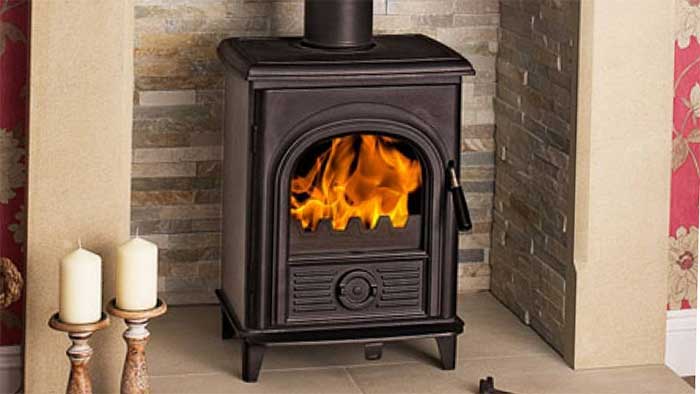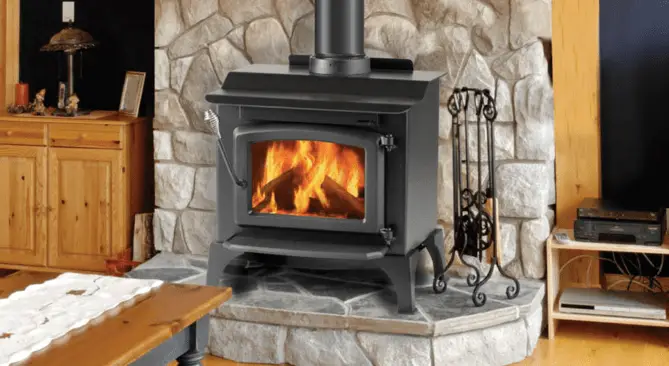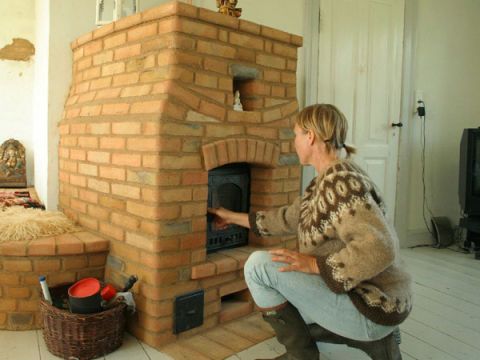Nothing beats the feeling of coming back to a warm and cozy home in winters. With winter approaching, people are looking for heating options for their homes out of which one of the most popular ones is a non-catalytic wood stove.
With so many options out there, it can be pretty intimidating to buy the right product. People often struggle to find a product suited to their needs. To make it easier for you, we have compiled the complete review of the best non-catalytic wood stoves on the market.
If you want to know more, keep on reading!
At a Glance: Our Top Picks for Best Non Catalytic Wood Stoves
- OUR TOP PICK: Iron Strike Grandview 300
- RUNNER-UP: JØTUL F 600
- BEST BUDGET OPTION: Vermont Castings Defiant
Comparison of the Best Non Catalytic Wood Stoves
| IMAGE | PRODUCT | |
|---|---|---|
Our Top Pick  |
| View Latest Price → |
 |
| View Latest Price → |
Best Budget Option  |
| View Latest Price → |
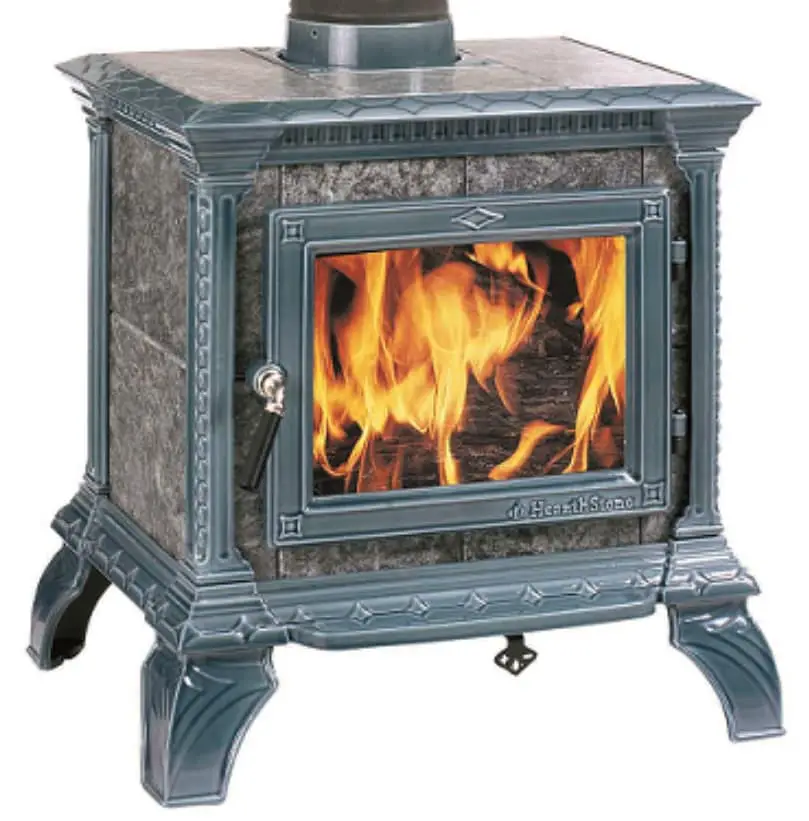 |
| View Latest Price → |
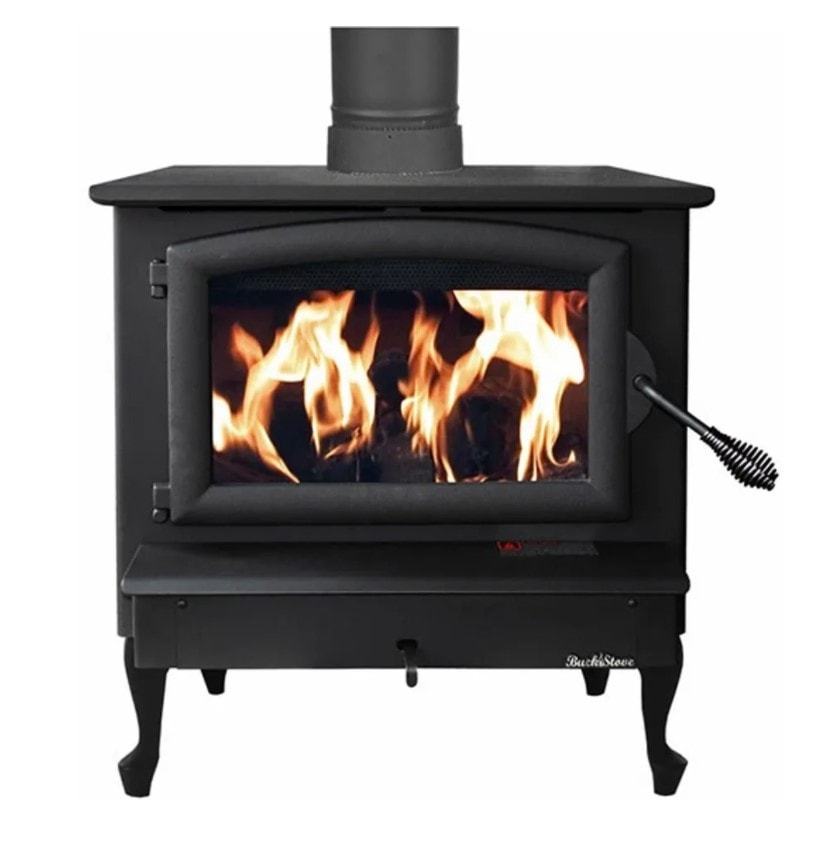 |
| View Latest Price → |
What is a Non Catalytic Wood Stove?
One of the most popular heating methods for winter is a wood stove, which is further divided into two: catalytic and non-catalytic stoves.
A non-catalytic unit is not equipped with a catalytic combustor; instead, it has three different internal characteristics that ensure a functional unit. These components are preheated combustion air, a large baffle, and firebox insulation. Even though non-catalytic units work differently than catalytic ones, they are deemed to be highly effective. Plus, they meet the smoke emission limits set by the EPA.
How Does a Non Catalytic Wood Stove Work?
As mentioned earlier, a non-catalytic stove isn't equipped with a catalytic combustor. Such stoves are equipped with fewer elements and therefore have a simpler working mechanism. Three major characteristics are involved for complete combustion in this kind of wood stove.
The firebox insulation and the large-sized baffle aid in creating long and hot gas airflow. Meanwhile, preheated combustion air is pushed out of the unit to the surrounding through the passage holes above the firebox.
Are All Non-Catalytic Wood Stoves the Same?
No, not all non-catalytic wood stoves are the same. Some differences separate various products apart. One such difference is the heat capacity.
The area indicates the heat capacity to which the stove can provide consistent and efficient heating. Now, you will notice each unit mentions a rating in BTUs and a certain heat capacity which implies how large or how small of an area the unit can work in.
This is an essential feature to know when investing in a wood stove. Furthermore, the price point is also different between units. This is mostly due to the difference in construction quality, extra features, and also the unit’s size.
Review of the Best Non-Catalytic Wood Stoves
There are plenty of wood stoves out there, which makes it really confusing for a consumer to choose one. Thus, to take some load off your mind, we have compiled and reviewed a list of the best non-catalytic wood stoves on the market.
Best Overall:
IronStrike Grandview 300

PROS
CONS
What Recent Buyers Report
Buyers seem to be pretty impressed with this unit. They love how well-constructed and durable this wood stove is. The heat output is incredible and proved to be ample for heating a large room. Some consumers did notice vibration at a higher speed in the blower, but most buyers liked the overall build.
Why it Stands Out to Us
There are several reasons why this IronStrike model stood out to us. Firstly, it is equipped with a three cubic feet firebox interior which allows it to accept logs as large as 21". The heat output of this unit is truly commendable for a single stove. It can heat up to 3000 sq ft, which is amazing.
This wonderful unit is equipped with a thermal fin heat exchanger that allows it to create 32% more surface area than a standard design, allowing more heat to enter the room. It has an integral air wash system that keeps the glass clear and clean.
Bottom Line
Overall, this model is one of the best, most reliable units you can get. It has little to no weak points in its design. The overall unit is highly functional and incredibly convenient to use for consumers.
Runner-up:
JØTUL F 600

PROS
CONS
What Recent Buyers Report
Most buyers are very happy with this unit. They find it to be incredibly well-designed. It is easy to access and convenient to use, even for first-time users. Some consumers did find that it spilled ash upon opening the firebox door due to the kind of design it has. However, they were content that the product performed very well and was capable of heating a large area.
Why it Stands Out to Us
This is perhaps one of the simplest and most convenient units on the market. It features an incredibly heavy-duty design that is constructed to be super durable. It has a front and side loading door added specifically for user convenience.
The air wash system efficiently keeps the glass clean and clear. It looks incredibly classy and elegant sitting in any room. Plus, the product comes in different colors to choose from, so you can choose the one that best meets your preferences. Furthermore, it has an enamel surface that allows easy maintenance and preserves the appearance of your product for a longer period.
Bottom Line
There are several products out there, but very few are as well-constructed as this one. It features a highly durable and innovative design, along with an enamel surface that is resistant to corrosion.
Best for the Money:
Vermont Castings Defiant

PROS
CONS
What Recent Buyers Report
There are several aspects of this unit that buyers loved. Firstly, it is designed with easy top-loading to minimize effort and keep smoke and embers contained. Plus, it has thermostatically controlled combustion which provides a longer burning time. Consumers find that the warranty can be improved but the overall build and high functionality make it a great investment.
Why it Stands Out to Us
Several features make this unit stand out to us, but the most notable feature is its top-loading technology. This feature allows the embers and smoke to be controlled and not enter the inside of your house. Reloading the stove will also not cause ash to spill out, ensuring a mess-free operation.
Furthermore, it has a 3.2 cubic-feet firebox capacity which can hold logs up to 20". The unit has a burn time of 14 hours.
Another incredible feature is the thermostatically controlled combustion that is responsible for longer and more consistent heating.
Bottom Line
All in all, this is a wonderful unit to splurge on. It is incredibly well-constructed and highly reliable. The performance is consistent and satisfactory with the latest technology and modern design.
4. Hearthstone Tribute 8040

PROS
CONS
What Recent Buyers Report
Lots of positive reports praise this unit's impressive and classy exterior, which added to the buyer's room aesthetics significantly. Even though it is only suited for small areas and has a limited wood capacity, it is reported to have an unmatched performance compared to other heavy-duty units.
Why it Stands Out to Us
The sturdy construction of this unit makes it stand out to us. It is one of the most user-friendly units on the market featuring a single air intake level. You can get top-notch heating without having to tend to the fire often.
Another wonderful feature is its fan with a built-in thermostat. These two components ensure an even heat distribution throughout the space. One of the major attractions of a wood stove is the fire viewing, and this unit offers a moderately-sized window to give a good look at the fire. The door allows easy loading and remains mess-free from ash and wood pieces.
Bottom Line
Overall, the Hearthstone model can be used in large rooms or small houses, as it works incredibly well in any setting. It offers consistent heating to counter the cold winters.
5. Buck Stove Model 21

PROS
CONS
What Recent Buyers Report
This model received lots of praise and positive remarks. Buyers find it to be very well-designed and highly functional, particularly in harsh winters. The design is reported to be simple and user-friendly with no excessive features to complicate the operation. It is fairly easy to maintain, as well.
Why it Stands Out to Us
If you are looking for a simple and straightforward wood stove, this is the ideal pick. It caters to small areas such as bedrooms and small apartment lounges. It features easy-to-use functionality that is good for people who have not used wood stoves before.
While being budget-friendly, the unit is also very low-maintenance. As a result, there will be little to no repairing costs in the longer run. You can have it as a free-standing unit or install it in your fireplace, according to your preference.
Bottom Line
Last but not least, this wonderful unit is worthy of your money. It offers a simplistic and basic design that can be great for smaller areas. It is a low-maintenance product that has impressive heat output to make any space cozy and warm.
Advantages and Disadvantages of Non-Catalytic Wood Stoves
If you are still unsure about buying a non-catalytic wood stove, look at the advantages and disadvantages listed in this section. These will surely give you a better perception of these units and make up your mind as to whether or not it is a worthy purchase:
Pros
Here are some advantages to look forward to:
Maintenance and Operation
One of the biggest attractions of a non-catalytic wood stove is that it is easy to maintain. It also does not require any part replacement after a few uses nor is it tricky to clean. Its operation is incredibly simple, making it a popular choice amongst consumers.
Affordability
When compared to catalytic wood stoves, non-catalytic ones are much cheaper. They don't require extra power supplies like pellets and are affordable in the long run as well. Furthermore, as they are more popular, they are available at various price ranges. Due to the high competition amongst rival products, the prices are not too high and they fall in most people's ranges.
Convenience and Aesthetic
Not only is a traditional wood stove classier, but it also provides the same aesthetics and looks that a fireplace does. You can view the fire from a safe distance and enjoy its beauty. It doesn't produce much leftover waste; thus, cleaning is convenient.
Cons
Let's take a look at a disadvantage to be mindful of:
Reduced Efficiency
One of the most significant drawbacks of a non-catalytic wood stove is the reduced efficiency. There is no denying that non-catalytic stoves are less efficient as they lack a catalytic combustor. They take up more energy while producing less heat. They are only mostly up to 70% efficient.
Catalytic vs. Non-Catalytic Wood Stove - Comparison Overview
Catalytic and non-catalytic stoves differ drastically in terms of their working mechanism. It's important to look at their differences and similarities so that you can decide one suits your needs the best.
Similarities
Both the units essentially serve the same purpose and just differ in terms of operation. They are both considered high-quality, consistent, and safe heating options. Both are also suitable for small and enclosed spaces like garages and bedrooms.
Differences
There are more differences than similarities between the two. Here are some ways they differ from one another:
- Price Point
There is a stark difference in the price points of the two types. Catalytic stoves tend to be more efficient, complex, and equipped with advanced tech, making them pricier than non-catalytic ones.
- Maintenance
It is more convenient and easier to maintain a non-catalytic stove, given its simplistic design. Some catalytic models have a high-maintenance design, featuring parts that need repair or replacement every now and then.
How to Use a Non-Catalytic Wood Stove
Beginners and even people who already own a wood stove often have difficulty in using a non-catalytic unit. It's not difficult at all but it may seem intimidating if you haven't used one before. So, let's take a look at the step-by-step process:
Non-catalytic stoves tend to create efficiency through the heavily insulated firebox. This helps keep the heat in, creating a hot environment for efficient combustion. It employs a secondary combustion area, so more soot and gases are burned.
- To create a fire, open the firebox door, and place five to ten balls of wadded newspapers at the bottom.
- Now, cover that with about 15 to 20 pieces of kindling (small wood pieces). Then, go ahead and open the air control and make sure it is open for a minimum of 15 minutes.
- The air control may be located in different places, depending upon the stove construction.
- Next, light up the paper and kindling. Once you think it is burning properly, add two to three logs that are about three or four inches on top of the kindling.
- Once this wood starts burning, close the primary air control, and add more logs.
- Larger logs are for longer and slower fire, whereas smaller logs make for a quick yet hot fire.
- For sustaining the heat, the fire should burn slower and longer, which will cause yellow flames above the logs rather than flames rising directly from the wood beneath. These yellow flames are an indication that the secondary air tubes are lit which is when your stove is burning most efficiently, and there will be no smoke coming from the chimney.
- As long as the coals are still hot after a fire, you won't need to start a kindling process for a new fire. This is known as a hot start.
- At this point, if you want to reload the stove, open the air controls to liven up the coal bed.
- Then, carefully rake the burning charcoal at the front of the fire bed and load the larger pieces of cold wood at the back.
- Incoming air from the primary air control will feed the coals in the front to ignite a fire.
If you think that you need further clarity on any part of the process, go ahead and click on the video below.
Conclusion
As winter approaches, people start searching for the most efficient and convenient house heating systems. A non-catalytic stove, like the ones reviewed in this article, is a popular choice amongst consumers due to its convenient and low-maintenance design. Make sure to choose the unit that best meets your needs and purpose.
People Also Ask
When it comes to buying a wood stove, there's a ton of inquiries that people have. So, we took some of the most frequently asked ones and answered them in this section.
What is a Catalyst in a Wood Stove?
Wood stoves are equipped with a catalytic combustor that re-burns gases that have been released by the burning wood. The temperatures at which this combustor operates are very high. It offers increased efficiency and fewer gas emissions into the environment.
How to Improve the Performance of a Non-Catalytic Wood Stove
There are several ways to do so. The placement of the chimney is an important factor; make sure that you have at least kept it two feet taller than your roof. Furthermore, the stove pipe needs to be kept less than seven feet tall. Clean your chimneys regularly, especially when it is in rigorous use. An important step here is to not buy low-quality, cheap wood.
How Do You Start a Fire in a Non-Catalytic Wood Stove?
Firstly, put your damper control in a completely open position. Then, gather your kindling, which in this case is a shredded newspaper and small pieces of wood. Next, light the kindling and close the door about three-quarters of the way.
After approximately 15 minutes, when the wood kindling is crackling, add the larger pieces of seasoned wood. Shut the door, and adjust the damper control to the desired level. Do not leave the fire unattended at any point.


